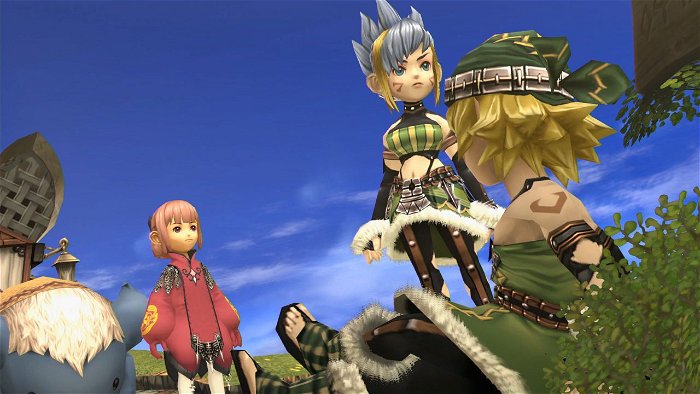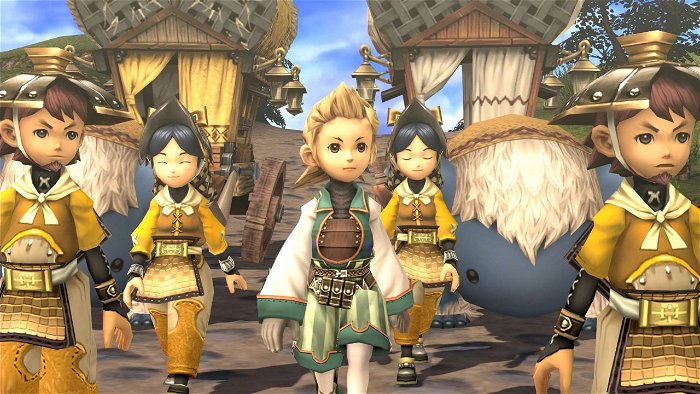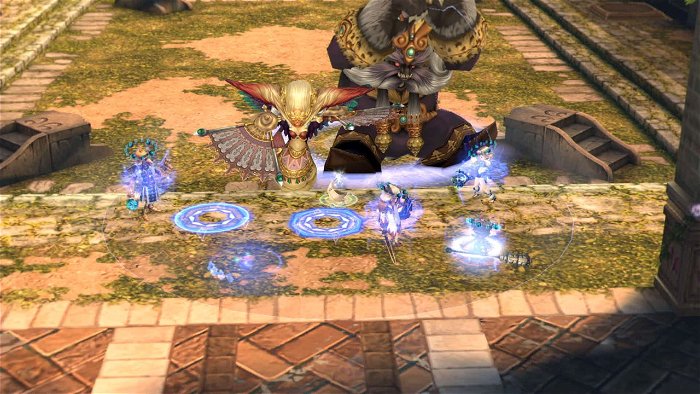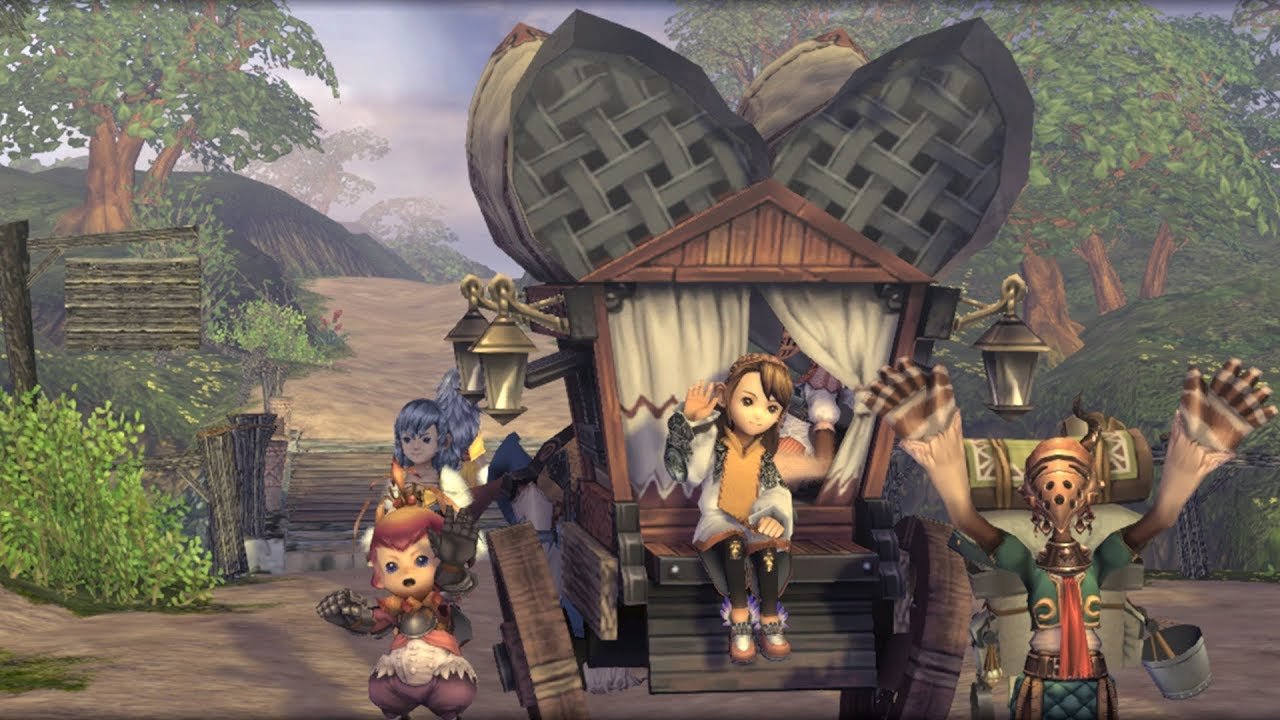Final Fantasy Crystal Chronicles Remastered aimed to bring the teamwork and shared adventure of the original title to modern consoles and smartphones, doing away with the complex setup of the original game.
This opened up some exciting possibilities for how the game played, but also meant some complex challenges in its presentation and play had to be overcome.
CGM had a talk with the game’s director, Araki Ryoma, to learn more about the ideas that went into some of the game’s design changes, the reasons they chose to remaster the game, and the complexities of creating new content that would feel at home in an old game.
CGMagazine: What interested you about revisiting Final Fantasy Crystal Chronicles? What made it seem like a good idea to remake it now?
Araki Ryoma: The original Final Fantasy Crystal Chronicles was released the same year that I joined SQUARE ENIX. Back then, I was working on a GameCube title at a different company, but I remember being struck by SQUARE ENIX’s level of talent and craftsmanship. This was the game that led me to come knocking on SQUARE ENIX’s door to work here, so it’s a game that I’m very much attached to.
Additionally, I’ve worked on the development of online games for about the past ten years, so this game fits with my theme of wanting to create games where people can come together and have a fun time.

If felt like the perfect timing with online infrastructure for modern-day gaming environments becoming widespread, and also with great smartphone quality and all platforms being at a developed level. We also anticipated that cross-platform would be feasible with the current trend. And with the co-op multiplayer characteristic of this title, we thought these would create the greatest synergy.
With all these things combined, I chose Final Fantasy Crystal Chronicles as my remaster project.
CGMagazine: What challenges did you face in updating the multiplayer to an online version instead of the local GBA-based play? What gameplay elements had to be tweaked or altered?
Ryoma: In transitioning from Game Boy Advance to an online platform, the game would no longer be in the form of sharing one screen. So, with that, we consolidated the information and also organized the UI elements that were displayed on the Game Boy Advance screen.
Just by not sharing a TV screen with the other players anymore, the prerequisites that affect the UI design (such as the environment players move in or gaming experience) change drastically. As such, even though we’ve kept the atmosphere of the designs, we created the UI from scratch.
CGMagazine: What difficulties did you face in bringing crossplay to the game? What work went into optimizing a game that was being made for mobile and console at the same time?
Ryoma: There were so many difficulties that I don’t know where to start [laughs], but optimization for the mobile devices was quite a challenge. From the initial planning stages, we had proceeded with the prerequisite that optimization to a certain degree would be necessary, such as decreasing the texture size or omitting post-processing effects; but in the latter half of the project, there was a need to take the optimization one step further.
Output is supported to a certain degree through the game engine, but with existing engines, the tuning could actually be the bottleneck for games of this scale if you want to get down to the details, so this is one area we had difficulties with.

CGMagazine: What thoughts went into the new content for the game? What thoughts go into making brand new content that still feels like it was part of the original game? That captures the same spirit as the original game?
Ryoma: The main concept of this title is to elevate the multiplayer experience, so all the additional elements were designed to lead to that point. These were ultimately designed in a way to be built up as continuations of the good qualities of the original. Additionally, some points in the original would be inevitably perceived as somewhat user-unfriendly in the modern age (even if the controls were natural for a game back in the day). As such, we tried to supplement those points as much as possible so that even new players would be able to pick up this game as one that’s on the same level as a new game in this modern age.
CGMagazine: What ideas went into making the more challenging dungeons you can play post-game? How do you push players with challenges without making them frustrated?
Ryoma: Generally, we designed the difficulty levels in a way that would be fun to play in the multiplayer mode, as we foresee multiplayer being a heavily used feature in this game.
There are a number of high-difficulty dungeons, but they have been designed in a way to fit into one of three broad difficulty tiers: 1. “stage to enjoy easily-accessible dungeons right after completing the game,” 2. “stage to acquire new resources,” and 3. “stage for real endgame content through which players can challenge themselves.”
Additionally, in order to set a framework to make it easier for veterans to help out newcomers for necessary resources, we made it so not only new items, but also existing items, would be needed to a certain extent. As such, it’s designed in a way so that you can acquire the necessary resources through proactively playing with newcomers and friends to help them out.

CGMagazine: In remastering a game, you have to carefully choose which elements to remain the same and which to tweak or improve upon. How did you decide what would be best served by being tweaked or improved in Crystal Chronicles Remastered?
Ryoma: I already mentioned this in my answer to one of your previous questions, but the deciding factor was whether it would help the game preserve the original’s good qualities while making it a new game for the modern age that could be played without it feeling odd. During the initial development stages, I talked to Kazuhiko Aoki—the director back then for the original—about this matter, and he had given me approval to make changes to that extent (in other words, it wouldn’t have to be a straight-up port). As such, we carefully preserved the playful elements of the original while also deliberately making bold changes for parts that would be output to the players (such as UI and systems) as well as bold additions to the endgame content.
CGMagazine: What drew you to do new recordings of the soundtrack?
Ryoma: We decided at a relatively early stage that along with the addition of new tracks, we would newly record the singing and the narration. Since it had been ten-odd years since the original, we felt we could make it better than what we had back then if we recorded it again.
It was decided somewhere down the line that we would remaster the in-game music, which originally was derived, in part, from the passion of Hidenori Iwasaki, who was heavily involved in the creation of the original music. The tracks and singing reached a splendid quality, far beyond my imagination.



